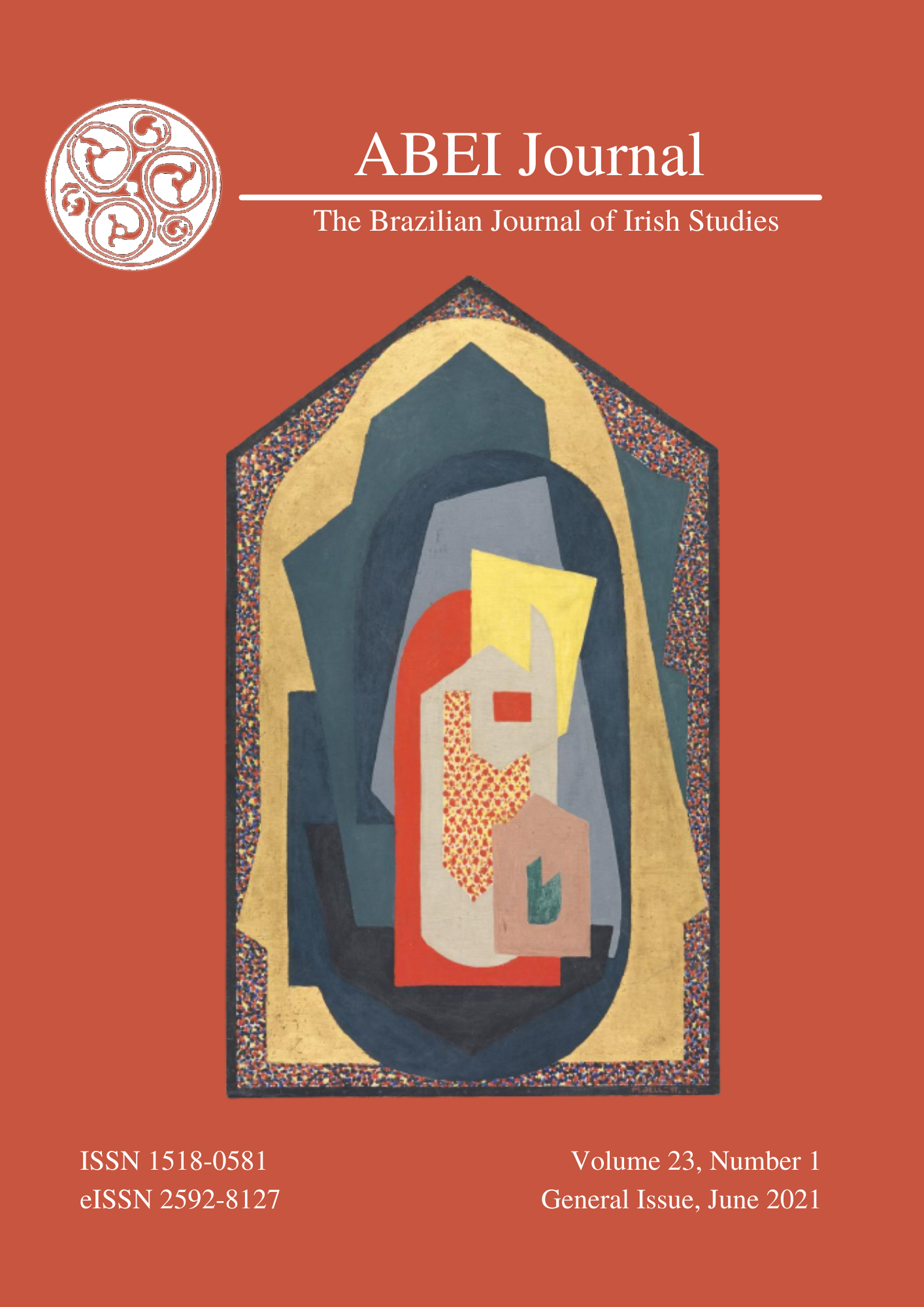Good and Evil Church: The Two Faces of Catholicism in Charles Maturin’s Melmoth the Wanderer
DOI :
https://doi.org/10.37389/abei.v23i1.192580Mots-clés :
Gothic, Catholicism, Ireland, Maturin, Melmoth the WandererRésumé
The Eighteenth Century saw the emergence of Gothic literature, for which the Catholic Church came to represent all the fears English society at large felt towards European continental ‘invasion’, an enemy at the gates. However, some of these novels, full of evil priests and nuns, also include the other side of the coin: religious characters who exert themselves in a Catholic life to find opportunities for exercising benevolence and charity to those in need.
Références
Baigent, Michael, and Richard Leigh. The Inquisition. Penguin Books, 2000.
Boran, Pat. A Short History of Dublin. Mercier Press, 2000.
Cirlot, Juan Eduardo. Diccionario de símbolos. Barcelona, Ed. Siruela, 2006.
Fitzgerald, Mary. “The Unveiling of Power: 19th Century Gothic Fiction in Ireland, England and America.” Literary Interrelations. Ireland, England and the World. Vol. 2. Comparison and Impact, edited by Wolfgang Zach and Heinz Kasok, Tübingen, Gunter Narr Verlag, 1987, pp. 15-25.
Foster, Robert Fitzroy. “Ascendancy and Union.” The Oxford History of Ireland, edited by Robert Fitzroy Foster, Oxford University Press, 2001, pp. 134-173.
Gillespie, Niall. “Irish Jacobin Gothic, c. 1796-1825.” Irish Gothics. Genres, Forms, Modes, and Traditions, 1760-1890, edited by Christina Morin and Niall Gillespie, Palgrave Macmillan, 2014, pp. 58-73.
Hansen, Jim. Terror and Irish Modernism: The Gothic Tradition from Burke to Beckett. State University of New York Press, 2009.
Kelly, Jim. Charles Maturin: Authorship, Authenticity and the Nation. Four Courts Press, 2011.
Kramer, Dale. Charles Robert Maturin. New York, Twayne Publishers, 1973.
Maturin, Charles Robert. Melmoth the Wanderer. Edited by Chris Baldick, Oxford University Press, 1998.
Maturin, Charles Robert. Women; or, Pour et Contre. Philadelphia, Moses Thomas, 1818. 3 vols.
Miles, Robert. “Europhobia: The Catholic Other in Horace Walpole and Charles Maturin.”
European Gothic. A Spirited Exchange, 1760–1960, edited by Avril Horner, Manchester University Press, 2002, pp. 84-103.
Morin, Christina, and Niall Gillespie. “Introduction: De-Limiting the Irish Gothic.” Irish Gothics. Genres, Forms, Modes, and Traditions, 1760-1890, edited by Christina Morin and Niall Gillespie, Palgrave Macmillan, 2014, pp. 1-12.
Lougy, Robert E. Charles Robert Maturin. Lewisburg, Bucknell University Press, 1975.
Peters, Edward. Inquisition. University of California Press, 1989.
Ranelagh, John O’Beirne. A Short History of Ireland. Cambridge, Cambridge University Press, 1983.
Rawlings, Helen. The Spanish Inquisition. Blackwell, 2006.
Scott, Walter, and Charles Robert Maturin. The Correspondence. Edited by Fanny Elizabeth Ratchford, New York, Garland, 1980.
Téléchargements
Publiée
Numéro
Rubrique
Licence
(c) Copyright Charle Jorge 2021

Ce travail est disponible sous licence Creative Commons Attribution - Pas d’Utilisation Commerciale 4.0 International.


